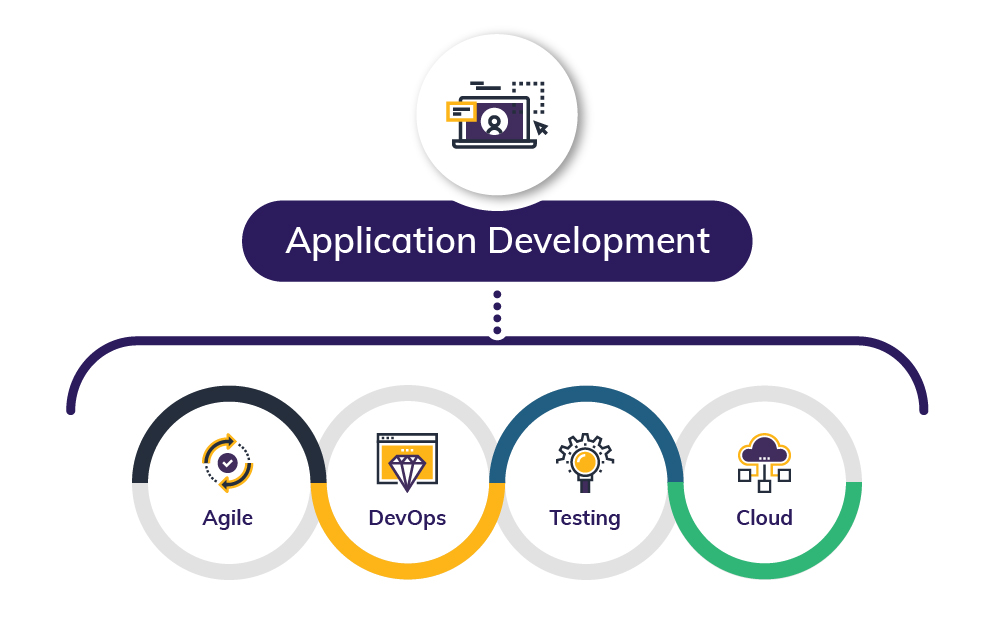The Stagnation of Software Delivery Metrics in DevOps
 tech
tech
In recent years, DevOps has emerged as a transformative approach to software development and delivery, promising increased collaboration, faster release cycles, and improved quality. However, despite its initial momentum, the adoption of DevOps practices has encountered significant challenges, leading to stagnation in software delivery metrics. In this article, we delve into the reasons behind the slowdown in DevOps momentum and explore strategies to reignite progress in software delivery.
Understanding DevOps
The Core Principles of DevOps
DevOps is a cultural and organizational movement that aims to break down silos between development and operations teams, fostering collaboration, automation, and continuous feedback throughout the software development lifecycle (SDLC). Its core principles include:
Collaboration: Encouraging communication and collaboration between development, operations, and other stakeholders.
Automation: Automating repetitive tasks to streamline processes and improve efficiency.
Continuous Integration and Continuous Deployment (CI/CD): Implementing CI/CD pipelines to enable frequent and reliable software releases.
Measurement and Feedback: Collecting data and feedback at every stage of the SDLC to drive continuous improvement.
The Promise of DevOps
DevOps promises numerous benefits, including accelerated delivery times, increased deployment frequency, reduced failure rates, and faster time-to-market. By aligning development and operations teams, DevOps enables organizations to respond more quickly to customer needs and market demands, ultimately driving business growth and competitiveness.
The Stagnation of Software Delivery Metrics
The Rise and Fall of DevOps Momentum
While DevOps initially gained traction as a revolutionary approach to software delivery, many organizations have struggled to sustain its momentum over time. Despite implementing DevOps practices, software delivery metrics such as deployment frequency, lead time, and change failure rate have plateaued or even declined in some cases. Several factors contribute to this stagnation:
Complexity and Scale: As organizations scale their DevOps initiatives to larger and more complex environments, they encounter greater challenges in maintaining consistency, reliability, and performance across distributed systems.
Legacy Systems and Technical Debt: Legacy systems and technical debt pose significant obstacles to DevOps adoption, hindering organizations' ability to modernize their infrastructure, automate workflows, and achieve agility.
Cultural Resistance: Cultural resistance within organizations, including resistance to change, lack of alignment between teams, and entrenched silos, can impede collaboration and hinder the adoption of DevOps practices.
Tooling and Technology Constraints: Limited tooling and technology options, coupled with integration challenges and vendor lock-in, can constrain organizations' ability to fully leverage DevOps capabilities and achieve desired outcomes.
The Impact on Business Outcomes
The stagnation of software delivery metrics, particularly those measured by introducing DORA metrics (DevOps Research and Assessment) metrics, in DevOps has far-reaching implications for business outcomes. Organizations may experience delays in product releases, reduced quality and reliability, increased operational costs, and diminished customer satisfaction. Moreover, the failure to realize the full potential of DevOps can erode competitive advantage and inhibit innovation, putting organizations at a disadvantage in today's fast-paced digital landscape.
Reigniting Progress in Software Delivery
Embracing DevOps 2.0
To reignite progress in software delivery, organizations must embrace DevOps 2.0—a new paradigm that builds upon the foundational principles of DevOps while addressing its inherent limitations. DevOps 2.0 emphasizes the following key areas:
Shift-left Testing: Integrating testing and quality assurance activities earlier in the SDLC to detect and address defects sooner, thereby reducing rework and improving software quality.
Site Reliability Engineering (SRE): Adopting SRE principles to ensure the reliability, scalability, and performance of production systems, thereby enhancing operational excellence and customer experience.
DevSecOps: Integrating security practices into the DevOps pipeline from the outset to address security vulnerabilities and compliance requirements throughout the software development process.
Value Stream Management: Applying value stream management principles to visualize, measure, and optimize the end-to-end software delivery value stream, enabling organizations to identify bottlenecks, eliminate waste, and improve flow efficiency.
Leveraging Emerging Technologies
In addition to embracing DevOps 2.0 principles, organizations can leverage emerging technologies to drive innovation and accelerate software delivery. Key technologies include:
Cloud-native Development: Embracing cloud-native architectures, microservices, and containerization to enable greater agility, scalability, and portability of applications.
Artificial Intelligence and Machine Learning (AI/ML): Harnessing AI/ML algorithms to automate repetitive tasks, predict software defects, optimize resource allocation, and enhance decision-making processes.
Edge Computing: Expanding DevOps practices to edge computing environments, such as IoT devices and edge nodes, to deliver real-time insights and services closer to end-users.
The stagnation of software delivery metrics in DevOps signals a need for organizations to reassess their approaches and embrace new strategies for driving progress. By embracing DevOps 2.0 principles, leveraging emerging technologies, and fostering a culture of continuous improvement and learning, organizations can overcome the challenges of stagnation and unlock the full potential of DevOps to achieve their business goals and thrive in an increasingly competitive digital landscape.
Subscribe to my newsletter
Read articles from tech directly inside your inbox. Subscribe to the newsletter, and don't miss out.
Written by
